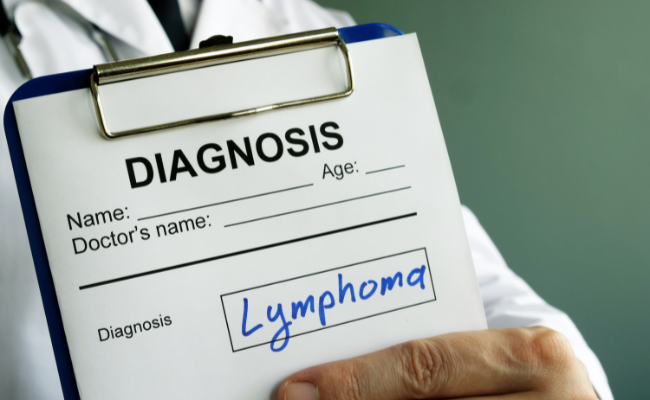What Causes Armpit Pain? Common Reasons and Remedies
Armpit pain can be caused by various factors, including injury, infection, inflammation, nerve damage, and in very rare cases, cancer.
Identifying the root of your armpit pain is essential in preventing any potential complications. This article discusses the main reasons for experiencing pain in the armpit when seeking medical advice and the remedies for armpit pain.
Common Causes of Armpit Pain
 The pain in your armpit region might be due to a temporary cause or an indicator of a more severe medical condition.
The pain in your armpit region might be due to a temporary cause or an indicator of a more severe medical condition.
Some common causes of armpit pain include the following:
Razor Burn and Irritation
Razor cuts and irritation are possible causes of pain in the armpit. Shaving with a dull razor or on dry skin can cause small cuts or nicks that can become infected, leading to inflammation and pain in the armpit area.
Shaving with a razor can even result in painful bumps known as ingrown hairs.
You may also like: How to Shave with a Safety Razor: What You Should Know
Additionally, irritation from harsh chemicals in deodorants, antiperspirants, body washes, soaps, and laundry detergents can also cause pain in the armpit and allergic reactions such as allergic contact dermatitis.
Allergic contact dermatitis is a common condition that can result in itching, burning, and small blisters. This skin condition often appears a day or two after exposure to the allergen.
On the other hand, since Allergic contact dermatitis can cause immediate symptoms such as skin irritation, pain, swelling, and heat, it makes it easier for people to identify the irritant.
Muscle Strain
Armpit pain can result from muscle strain due to overuse or injury. Various muscles in the chest and arm can result in armpit pain, including the pectoralis major, a large chest muscle that extends into the shoulder.
Activities such as sports or weightlifting can cause injury to this muscle. Additionally, the coracobrachialis, an upper arm muscle, can also be strained during activities such as baseball or tennis.
If any of these or other muscles in the chest or arm are sprained, it could result in armpit pain.
Cysts and Abscesses
Cysts can develop under the skin in any body part, including the armpit. In addition, cysts in the armpit can cause pain, redness, discomfort, swelling, and tenderness in the affected area.
In some cases, the cyst may become infected, which can lead to the formation of an abscess.
An abscess is a collection of pus that forms when an infection occurs. Symptoms of an abscess in the armpit may include severe pain, swelling, redness, and warmth in the affected area.
The skin over the abscess may become tender to the touch, making it difficult to move the arm.
Lymphadenitis
Lymphadenitis is a condition that can cause swelling and inflammation of the lymph nodes, which are an important part of the immune system. It can be an acute, subacute, or chronic condition, depending on different pathogens.
When lymph nodes in the armpit become inflamed, it can result in pain, tenderness, and discomfort. Various factors, including infections, immune disorders, and cancer, can cause this.
In some cases, the Varicella zoster virus can cause lymphadenitis and armpit pain. When the virus is first contracted, it can cause a widespread rash and fever.
The lymph nodes in the armpit can become swollen and painful as the immune system responds to the infection.
Lymphoma
Lymphoma is a type of cancer that affects the lymphatic system, which includes the lymph nodes, spleen, and bone marrow.
When lymphoma affects the lymph nodes in the armpit, it can cause pain, tenderness, and swelling. This can be accompanied by other symptoms such as fatigue, weight loss, and night sweats.
If lymphoma is suspected, a doctor may perform tests, which include a complete blood count (CBC), imaging tests, and a biopsy to confirm the diagnosis.
Treatment for lymphoma can include chemotherapy, radiation therapy, and stem cell transplant.
If you are experiencing armpit pain or other symptoms, seeing a doctor to determine the underlying cause and receive appropriate treatment is important. Detecting and treating lymphoma early can enhance the likelihood of a positive outcome.
Breast Cancer
Breast cancer is a type of cancer that affects the cells present in breast tissue and may result in discomfort in the armpit region in certain instances.
The spread of cancer cells from the breast to the lymph nodes in the armpit area can cause them to become inflamed and painful. Additional symptoms of breast cancer can include:
- A lump or thickening in the breast
- Changes in breast size or shape
- Discharge from the nipple
- Alterations in the skin surrounding the breast or nipple
Injury
Injury to the armpit area can cause pain and discomfort, which may be felt as a sharp, shooting pain or a dull ache. The armpit is a complex area of the body, with many muscles, nerves, and lymph nodes located in a small space.
Common causes of armpit injuries include trauma from a fall or impact, repetitive strain from activities like sports or manual labor, and overuse injuries from activities like weightlifting or throwing.
Injuries to the armpit may also be accompanied by swelling, bruising, or tenderness.
When to See a Doctor

Here are some signs that may indicate the need to see a doctor for armpit pain:
- When the pain is severe and persistent.
- You have a lump or swelling in your armpit that doesn’t go away or keeps getting larger.
- You have a fever or chills along with armpit pain.
- You notice swelling or redness around the affected area.
- You have discharge or pus coming from the affected armpit.
- You have difficulty moving your arm or shoulder.
Remedies for Armpit Pain
The remedies for armpit pain depend on the underlying cause of the pain. Here are some remedies that can help alleviate the symptoms of armpit pain:
Over-the-Counter Pain Relief
Over-the-counter (OTC) pain relief medication can effectively manage armpit pain. Pain relievers such as acetaminophen and ibuprofen can help reduce pain and inflammation in the affected area.
These anti-inflammatories should be taken as directed on the packaging and only for a limited period. It is important to avoid exceeding the recommended dose, as this can cause side effects and harm your health.
If the pain persists or worsens despite using over-the-counter pain relief medication, seeking medical attention is recommended.
Your healthcare provider can help determine the underlying cause of the pain and recommend appropriate treatment options.
Warm Compresses
Applying heat to the swollen area is a traditional and straightforward home remedy for treating the armpit. While no scientific evidence supports this method, it is commonly believed to reduce sore muscles, pain, and inflammation caused by cysts or lymphadenitis.
However, it’s important to be mindful of any open wounds or skin irritation in the affected area. You should avoid using warm compresses as they may worsen your condition.
If your armpit pain persists or worsens, seek medical attention. This way, they can determine the underlying cause and provide appropriate treatment.
Proper Hygiene
Proper hygiene is crucial in preventing armpit pain. Keeping the armpit area clean and dry can help prevent bacterial and fungal infections, which can cause pain and discomfort.
It is recommended to wash the armpits with mild soap and water daily, especially after sweating or physical activity. Additionally, using antiperspirants or deodorants can help control sweat and odor.
However, choose products that are gentle and free of irritants to avoid skin irritation. Also, using a mild moisturizing lotion after shaving can help prevent razor cuts and irritation.
Changing clothes frequently and avoiding tight-fitting clothing is beneficial in preventing friction and irritation in the armpit area.
Maintaining proper hygiene practices can reduce the risk of developing armpit pain and other conditions that affect the armpit.
Antibiotics and Other Medications

It is important to take the full course of antibiotics as prescribed, even if your symptoms improve. This prevents the bacteria from becoming resistant to the medication.
Your doctor may prescribe antifungal medications if your fungal infections cause pain.
Surgery (in Rare Cases)
Health experts may recommend surgery as a treatment option for armpit pain in cases where conservative treatments have failed to alleviate the symptoms.
This may be necessary if the pain is caused by persistent cysts, tumors, swollen lymph nodes, or even as a result of cancer.
Like all surgical procedures, they have inherent risks. Talk with a healthcare professional about the potential advantages and disadvantages before going through with the surgery.
Related Articles
Conclusion: Managing Your Armpit Pain
Managing armpit pain involves identifying the root cause of the pain and implementing appropriate remedies.
Practicing good hygiene, using gentle products, avoiding tight clothing, staying hydrated, maintaining a healthy diet, and exercising regularly are all effective ways to prevent armpit pain.
Applying heat to the affected area and using pain-relieving medication can also help alleviate symptoms. Seek medical attention if the pain is persistent or accompanied by other symptoms.
These tips will help you manage your armpit pain and prevent it from interfering with your daily life.


